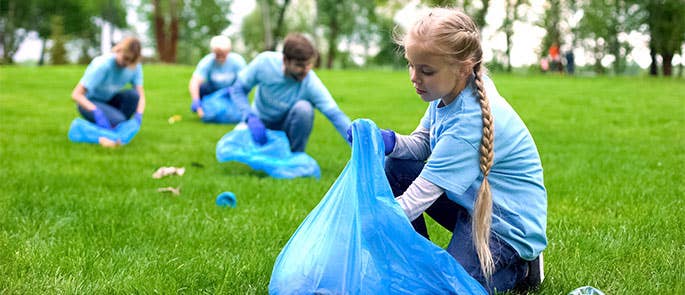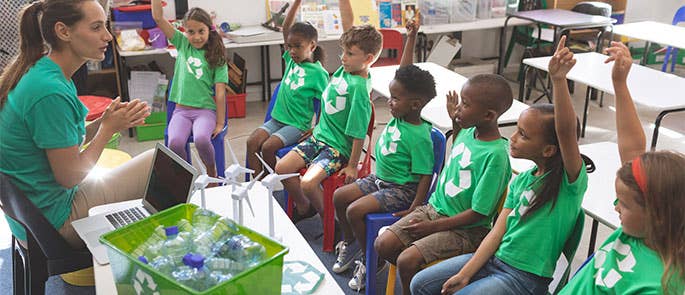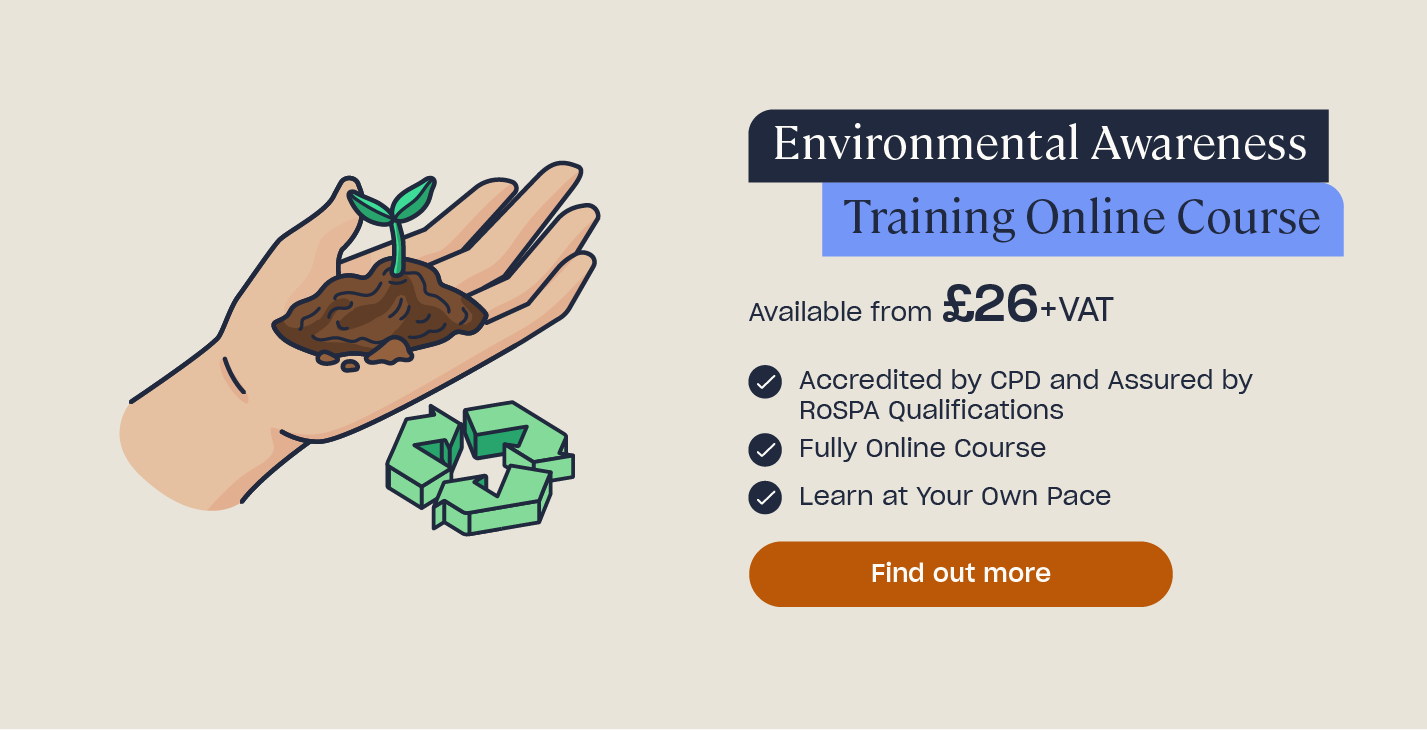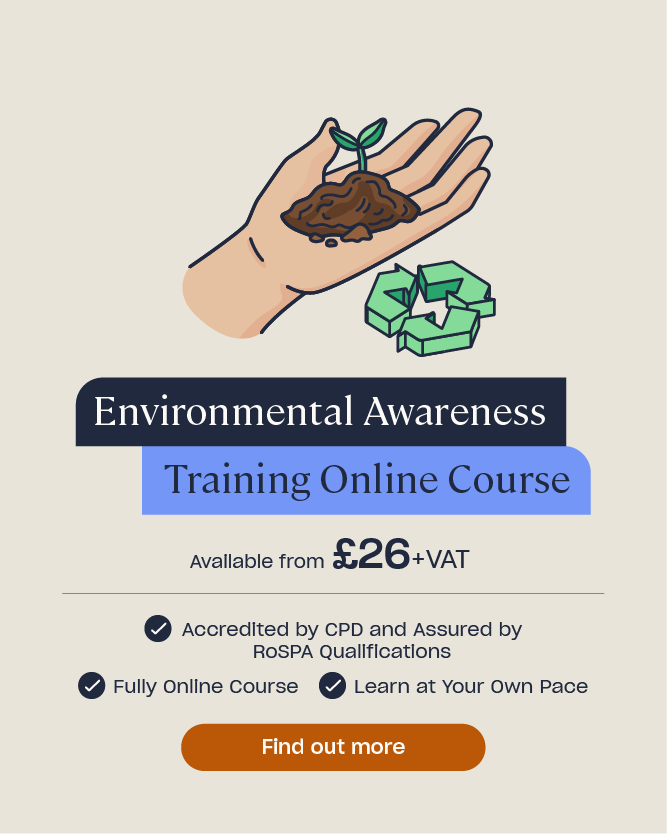Recycling in Schools: How Can We Reduce Waste?
According to Recycle Now, the average primary school produces 45kg of waste per pupil each academic year. Furthermore, it’s believed that up to 78% of this waste could be easily recycled or composted. If your school can reduce the amount of waste it produces and implement recycling, not only will your actions have an environmental impact, but it will also benefit your pupils in the long run.
Why is it Important for Schools to Recycle?
In today’s climate, it’s more important than ever to understand the importance of recycling and preventing waste to reduce your environmental footprint. There’s already a momentum around reducing waste and recycling, but with the help of the education sector, the impact could be profound. Below, we explain some of the benefits of recycling in schools.
Educating Pupils
By educating pupils about the importance of recycling, we are inspiring them to think about how their personal actions affect the planet and their future environment. Learning about recycling in schools means that children are more likely to adopt it as a habit, helping to make them conscientious adults. This encourages students to implement their recycling tactics in their everyday life, helping to tackle the waste they produce at home.
Environmental Impact
Recycling can really make a difference to our natural environment. It prevents materials from being sent to landfill and in turn, helps to cut down on the energy and greenhouse gases produced when new materials are created. These activities have a significant negative impact on the environment, contributing to climate change. You can encourage children to do their part by following three simple steps: reduce, reuse, and recycle. Recycling 1 ton of printing paper, for example, can help to save 24 trees from being cut down.
Positive School Image
According to BESA, there are currently over 10 million pupils attending 32,770 schools in the UK alone. Undoubtedly, handling school waste has a significant impact on the environment, but it can also positively impact the attitudes of pupils and parents. By instilling a sense of environmental awareness in pupils, the education industry can inspire children to get involved in other environmentally friendly practices. This can be an attractive factor for the parents of prospective students.
Cost Effective
In regards to cost, there are some significant benefits to recycling and waste reduction which could be saving your school money. By handling school waste efficiently, you can reduce the amount being sent to landfill and therefore be better able to manage school budgets. You may also develop a small income for the school if you choose to send some of your existing waste to local recycling schemes.
What are the Different Types of Waste in Schools?
By knowing the different types of waste you produce in a school, you’ll be able to better understand how to reduce it. Here, we outline the four most common types of waste found in schools.

Food
WRAP estimates that education catering produces 123,000 tonnes of food waste each year, accounting for 13% of the total food waste across the UK Hospitality and Food Service sector. This avoidable food waste accounts to 253,000 tonnes of greenhouse gas emissions per year. Often, food in schools gets wasted during lunch time, with some items barely being opened. Much of the food found in children’s lunchboxes also contain needless wrapping and single-use drink cartons. Of course, it can be difficult to monitor what food and packaging children bring in from home. However, you could suggest tips and techniques to parents and carers to encourage more sustainable food packaging habits. If you want some additional tips on how to reduce your food waste, you can find 21 ideas on how to do so at home here.
Paper
For the education sector, paper is the main type of waste, typically compromising at least a quarter of school waste. Education Executive found that up to one million sheets of paper are being used per school, per year, and a further £60,000 is spent on photocopying. In order to prevent this waste, you should think about how you can make efficient use of the resource. This may include things like using both sides of the paper, or simply encouraging staff to think before they print. Although you may continue to use a considerable amount of paper in school, it’s important to note that the majority of it can be recycled. You can significantly reduce the amount of paper sent to landfills by using a dedicated paper recycling bin in the classroom.
Plastic
Whether it’s plastic straws attached to milk cartons or parents using sandwich bags to wrap packed lunches, plastic waste is a huge problem for schools. It seems that the bulk of this waste derives from the cafeteria, but there are ways to reduce it. You could help to reduce single-use plastic in your school by encouraging reusable bottles and rethinking catering options. Instead of using plastic straws and cutlery, for example, you could encourage the use of reusable items instead. You may also decide to substitute things like sauce sachets with a large bottle of sauce to reduce this waste. Try and work towards creating a single-use plastic free canteen by finding alternative products.
Electronics
Electronic waste is among some of the most hazardous. The majority of UK schools use electronic devices, whether it’s a computer monitor or a printer. Under the Waste Electric and Electronic (WEEE) Regulations 2013, electrical equipment such as old computers must be correctly disposed of. This means ensuring any equipment is recycled, rather than ending up in landfill.
Electronics in schools often create a lot of waste. For example, printers produce a lot of waste like ink cartridges that often get sent to landfills once they have run out, having serious consequences for the environment. These plastic ink cartridges can take up to 1,000 years to decay, often contaminating the land beneath as they still contain some traces of ink. To avoid the dangers associated with discarding electronics as landfill, there are some great alternative options. Empties Please encourage you to recycle ink cartridges in exchange for a small profit, while UK Office Solutions allows you to claim free toner while recycling your existing toner and ink cartridges.
How Can Schools Reduce Waste?
The education industry is notoriously challenged for time and so, setting up recycling initiatives may seem like another time consuming task. Below, we have outlined some simple steps that you can take to improve your waste reduction and recycling.
1. Get your Class Thinking about the Environment
Children should feel encouraged to contribute to your schools recycling efforts. From going on scavenger hunts to find recyclable materials to challenging students to bring a lunch without waste, there are endless opportunities to implement fun ideas into teaching environmental awareness. You can find further resources to help educate pupils about recycling and reducing waste in our article, ‘Environmental Awareness For Children: Ideas for Teachers’. Use these free downloads and tips to get your class out into the world and thinking about the environment.
2. Set up a School Composting Scheme
Composting is a great way to deal with the problem of waste in schools. Before setting up your composting scheme, it would be useful to conduct a waste audit. This will allow you to easily assess what is thrown away and the quantity of each material. You will then feel more equipped to make better decisions about the type of composting system you should put in place. Going forward, you could even use your school composting scheme as a learning resource to study mini-beasts, gardening, and food waste.
3. Use Recycling Bins around the School
Many schools are currently using recycling bins to encourage children to dispose of their recyclable waste. It’s essential that these recycling bins are clearly labelled and accessible around the school. In order to encourage children to use these bins efficiently, you could ask pupils to design their own recycling labels to help them easily identify where to put their waste. Children could also create their own posters as an additional reminder.
4. Ensure Staff are Trained and Involved
Teach the Future found that 68% of students said that they want to learn more about the environment. Despite this, 75% of teachers feel as though they haven’t received adequate training to educate students about climate change. Therefore, it’s important to train staff about the environmental issues we face and the causes behind them so that they can teach pupils the same. Schools will then find it easier to get everyone onboard to tackle things like waste and have a more positive environmental impact. You can access High Speed Training’s Environmental Awareness course, here.

As a teacher, educating your pupils about recycling encourages them from a young age to be conscientious. This means you can inspire a future generation to be more green, as well as having a positive environmental impact as you do so.
What to Read Next:
- Environmental Awareness for Kids Quiz
- How to Reduce Food Waste at Home
- Environmental Awareness Training












